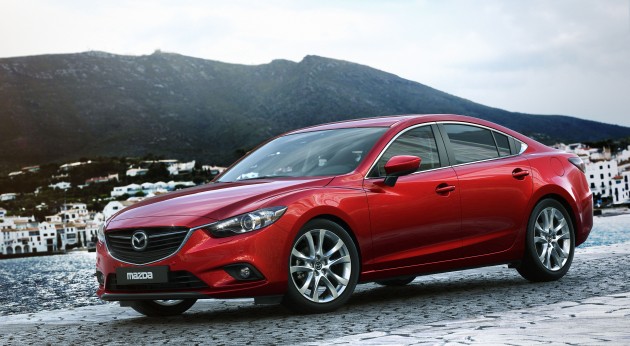
The next-generation Mazda 6 has made its world debut at the Moscow Motor Show, and we now have full details of Mazda’s D-segment challenger, which is the second car after the CX-5 to marry the carmaker’s Kodo design language with Skyactiv tech. This is an important model – Mazda calls it the flagship model of a new generation of vehicles.
The focus is on driving pleasure. Program Manager Hiroshi Kajiyama describes the new 6 as “a car that handles so well it seems to respond directly to the driver’s intentions rather than the physical manipulations of steering, braking and accelerating.”
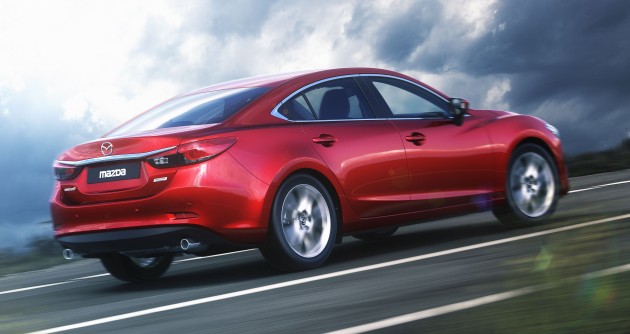
“In short, the new Mazda 6 offers the ‘joy of driving’ that people have come to expect from Mazda, but the experience starts even before you get behind the wheel and lingers long after the drive is over. I can’t wait to see the look on the faces of people getting out of the car after their first time behind the wheel of the new Mazda 6,” he adds.
The 6 was never the biggest car around, but this one is spacious. The front wheels have been moved forward by 100 mm in relation to the A-pillars, and a 2,830 mm wheelbase (30 mm longer than current Accord) delivers good cabin space.
At the back, knee clearance is 43 mm better than the previous model, while leg room, at 984 mm, is 37 mm up on the old car. The length of the rear seat cushion has been increased by 20 mm and the seat back length by 33 mm. Overall length is 4,865 mm.
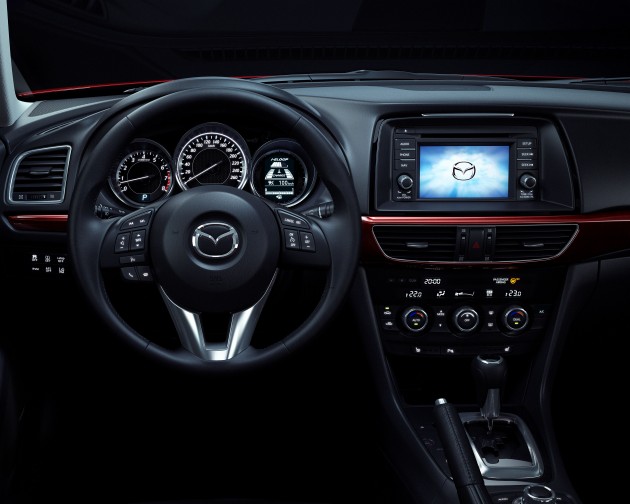
Up front, the driver gets an i-Drive style “multi commander” to control various functions via the five-inch colour centre display. Trip management information is displayed on a 3.5-inch multi-info display in the meter cluster, which has a classic three-dial layout. There’s no colourful illumination like in previous Mazdas – this one is more classy and serious.
Underneath, the Mazda 6 sits on a Skyactiv chassis that comprises front struts and rear multi-links, tuned for “agile driving performance in the low to mid-speed ranges and stability during high-speed driving.”
The Skyactiv body structure makes wider use of ultra-high tensile steel, reducing weight while at the same time improving torsional rigidity by about 30%. The car’s slippery shape and optimised underbody contribute to a class-leading coefficient of drag (CD) of 0.26.
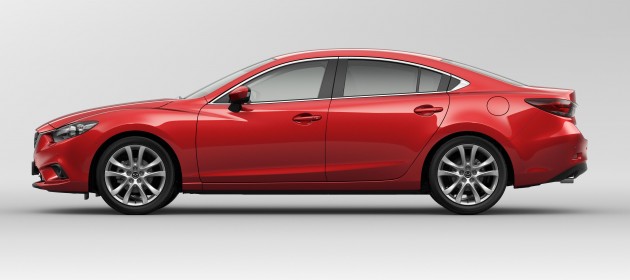
Two Skyactiv-G petrol engines have been announced, a 2.0 and a 2.5, both chain-driven, direct injection four-cylinder units. The smaller unit is the one with the higher compression ratio (14:0 compared to 13:0 for the 2.5) and it makes 150 PS and 210 Nm at 4,000 rpm. The 2.5L does 192 PS and class leading 256 Nm of torque at a rather low 3,250 rpm, which is a good thing. Six-speed transmissions are available – one has a choice of manual or auto for the 2.0, but the 2.5 is auto-only.
There’s more. The new 6 debuts i-ELOOP, Mazda’s brake energy regeneration system which begins charging a capacitor (a unique method) the moment the driver takes his foot off the accelerator. Electricity stored in the capacitor can then be used to power electric components throughout the car. This lessens burden on the engine and improves fuel economy. Mazda’s i-stop start-stop system, with a class leading engine restart time of 0.35 seconds, is also present.
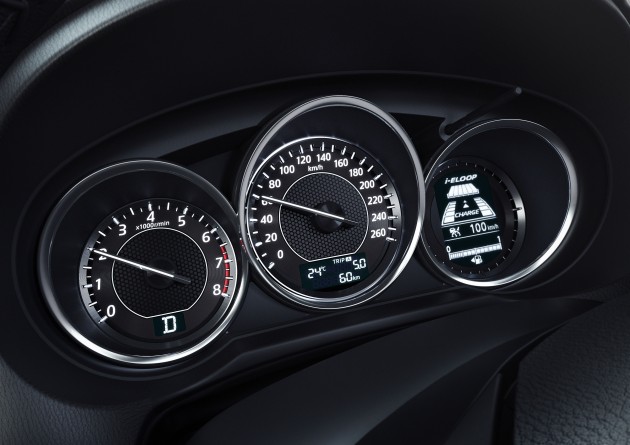
By the way, claimed combined fuel consumption is 6.1 litres per 100 km for the 2.0 auto with i-stop and 6.4L per 100 km for the 2.5 auto with i-ELOOP and i-stop. Kerb weight for the family ranges from 1,340 kg to 1,410 kg.
Available safety kit include High-Beam Control System, Adaptive Front-Lighting System, Hill Launch Assist, Emergency Stop Signal (hazard lights rapidly flicker in the event of panic braking), Rear Vehicle Monitoring, Lane Departure Warning and the infrared Smart City Brake Support. The latter auto brakes the car below 30 km/h to prevent or reduce impact.
http://paultan.org/


No comments:
Post a Comment